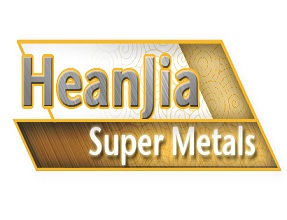You are here: home > Molybdenum News > Alloys of Molybdenum
Product (738)
- Pure Nickel Products (38)
- Incoloy Products (74)
- Inconel Products (72)
-
FeCrAl Product
(99)

-
Nichrome Products
(68)

- Monel Products (36)
- Hastelloy Products (49)
- Nickel Iron Alloy Product (59)
-
Nickel Copper alloys
(47)

- Nonferrous Metal Product (27)
-
Resistance Wire
(90)

- Stainless Steel Product (42)
- Mesh Demister (20)
- Others (17)
Product Forms (14)
Quality Certificate (11)
Learning Gallery (30)
Incoloy News (9)
Inconel News (22)
Molybdenum News (7)
Nikrothal News (4)
Nichrome News (13)
Titanium News (2)
Nickel News (8)
Alloys House (30)
Tools (27)
Nickel alloy News (30)
Latest Buzz (30)
nickel chrome copper iron alloys news (28)
Credit Report
Products Index
Company Info
Heanjia Super-metals Co., Ltd. [China (Mainland)]
Business Type:Manufacturer, Trading Company
City: Beijing
Province/State: Beijing
Country/Region: China (Mainland)
Molybdenum News
Alloys of Molybdenum
The special feature of molybdenum is its ability to perform in the extremely high temperatures without causing more expansion or tenderness that makes it worthy to use in the significant operations that are heat oriented like production of armor, components of aircrafts, electrical joints and commercial motors and filaments. The steel alloys with large potency consist of molybdenum in 0.25% to 8%.
Instead of small concentration of molybdenum, there are several applications that are using molybdenum in an extremely large amount such as 43,000 tons of molybdenum is used in the form of alloy agent to manufacture stainless steel, toolling, cast irons and large temperature bearing superalloys. The Molybdenum sheet is also used in the formation of steel alloys to obtain product with large resistance to corrosion and welding capacity. This metal also adds in enhancing the corrosion resistance of stainless steel of type 300, these are steels containing high content of chromium that is a metal with high value of resistance to corrosion. However in actual chrome moly alloy is not a steel of 300 kind steel, but it is a steel of series 41xx.
Instead of small concentration of molybdenum, there are several applications that are using molybdenum in an extremely large amount such as 43,000 tons of molybdenum is used in the form of alloy agent to manufacture stainless steel, toolling, cast irons and large temperature bearing superalloys. The Molybdenum sheet is also used in the formation of steel alloys to obtain product with large resistance to corrosion and welding capacity. This metal also adds in enhancing the corrosion resistance of stainless steel of type 300, these are steels containing high content of chromium that is a metal with high value of resistance to corrosion. However in actual chrome moly alloy is not a steel of 300 kind steel, but it is a steel of series 41xx.
The molybdenum treats by improving the crystal strain so enhancing the energy needed to dissociate the iron atoms from the basis. Due to minor density and high stability cost, molybdenum replaces tungsten in special applications. For example for high speed alloys molybdenum is preferably chosen.
The molybdenumcan also be used as alloying agent and flame protective coating for the protection of other metals. However the melting point of tungsten wire is2,623 °C or 4,753 °F and it gets oxidized easily at the temperature more than 760 °C or 1,400 °F makes it the superior materials for using in the vacuum conditions. The molybdenum superalloy opposes the melt fluoride salts at temperature more than 1300 degree C. moreover it offers double strength than pure molybdenum and is highly ductile and superiorly weldable. Ultimately, it possesses enhanced properties of pure molybdenum.
The molybdenum based alloys that consist of ferrous less likely, are used in a few operations only. For example due to rust protection of these alloys against the molten zinc, these are used in manufacturing pipes, stirs and pump impellers that come into direct contact of molten zinc.
Molybdenum in the grinded form is used in the form of fertilizer for plants like cauliflower. The elemental form o f molybdenum is used in the production of oxides of nitrogen, the examiners in the power production houses to control the pollution level. At the temperature of 350 °C or 662 °F molybdenum is treated as catalyst for nitrogen oxides to produce molecules of NO to obtain steady reading of infrared lights. The anodes of molybdenum wire have substituted tungsten wire in specific voltage sources of X- rays for particular applications. Molybdenum's radioactive isotope with atomic mass of 99 is implemented in the production of technetium 99m for medical virtualization.
Pre Page:
Effects of molybdenum on human body
Next Page:
Occurrence of Molybdenum in nature
.gif)


